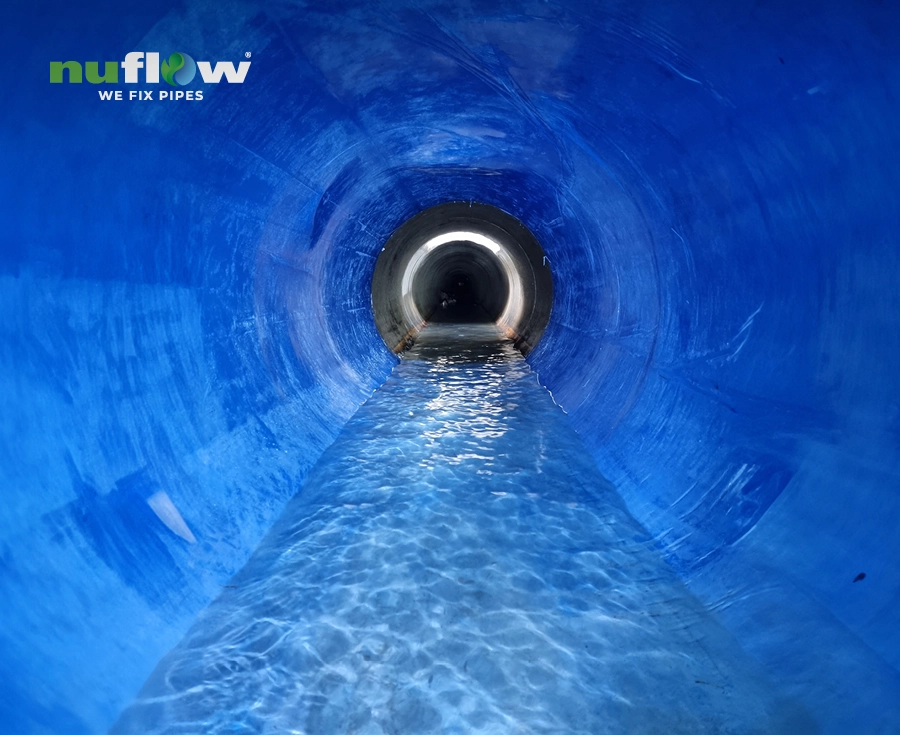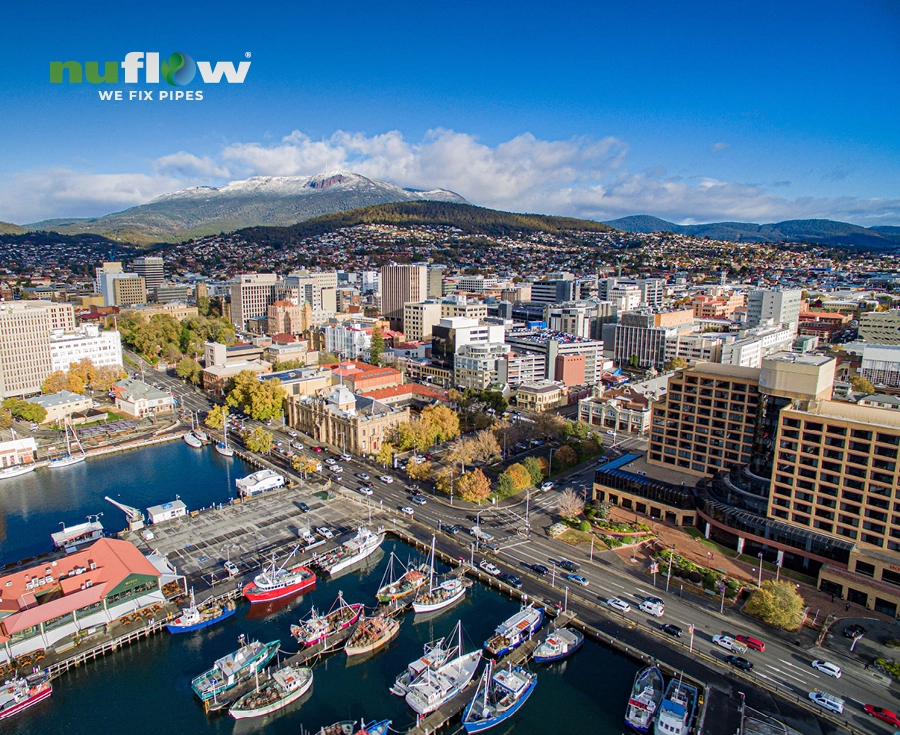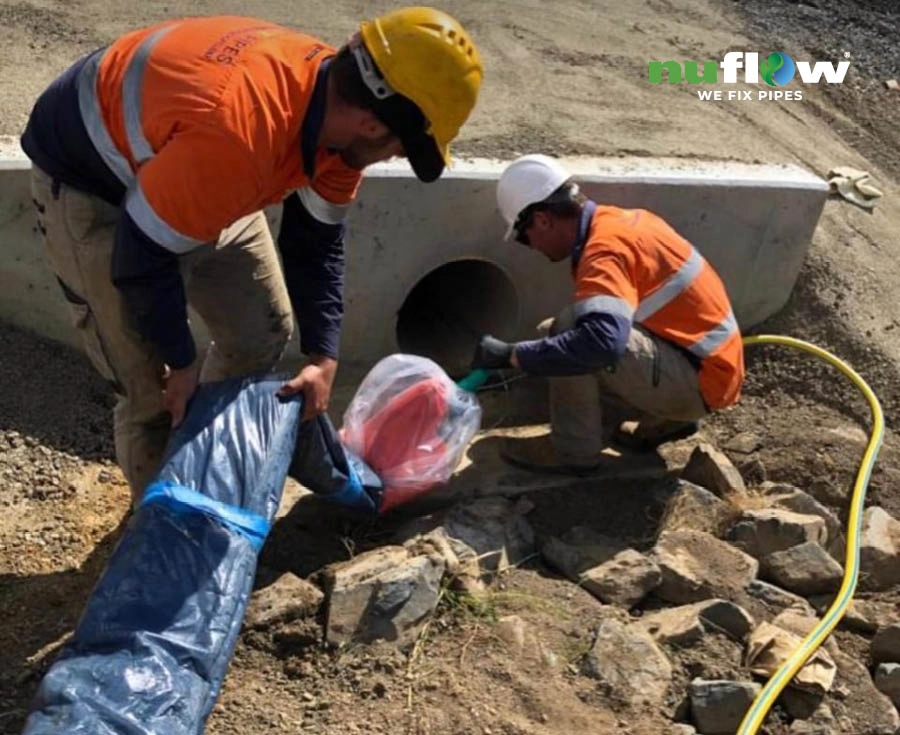Whilst the general community is finally moving toward the new ‘no-dig’ pipe relining technologies the big players have been using for decades, there is still confusion about which relining option is best for each situation.
In this article we will explain the difference between some of the leading CIPP relining products available in Australia today, namely:
- Blueline technology
- Greenline pipe relining
- Redline technology.
Choosing the pipe relining alternative that’s right for you
Decisions, decisions, decisions!! There you were, settling in for an afternoon in front of the footy when the kids run up the hall screaming the toilet bowl’s full to the brim. You jump onto Google for some help, but after looking over the first six or seven sites your head’s beginning to spin.
Pipe relining, drain clearing and plumbing are fairly competitive industries. That’s why an internet search on things like how to fix broken sewer pipes will throw up a long, confusing list of subjective commentary. Most of this advice is generated by those operating commercially in the trade, which makes singling out balanced and genuinely useful information a challenge.
Understandably, most throw their support behind the methods and products their own company offers and ignore or (even worse) denigrate other alternatives. But thankfully there are also some which provide useful and reasonably factual information for those wondering which pipe relining alternative is best for them.
Ways of repairing pipes
When it comes to repairing pipes the first consideration is whether you want:
- a ‘trenchless’ repair (no excavation or digging), or
- an excavation (traditional methods involving digging).
This will obviously depend on your site, your budget and the value of any built structures or landscaping near the site of the break. In open, easily accessible, soft soil where the cause (and extent) of pipe damage is certain, excavation may be the better option (particularly if you are willing to do some of the digging yourself).
If you do decide on excavation and replacement of pipes, your local plumber may be the best person for the job. If it’s a really simple fix, you might even want to try tackling the job on your own. This is not permitted in relation to many wastes and plumbing systems however because of health risks to yourself as well as the general community.
If the exact location, extent and cause of damage are not certain or there are other considerations like site stability, the need for concrete cutting, demolition, or a preference for not disturbing gardens or lifestyle, a trenchless method of repair would be more suitable. For more detailed information on this, we’ve provided a related article explaining the benefits of trenchless pipe repairs.
But that’s nowhere near the end of the ball game. From here you have to decide on the type of trenchless repair that will work best for you, and even then, which method of installation and which specific relining product will do the job.
TRENCHLESS PIPE REPAIRS
There are three main ways of addressing damaged or degraded pipes without the need to dig a trench. They are:
- PIPE RELINING
- PIPE BURSTING
- PIPE RAMMING
Pipe bursting and pipe ramming are more commonly used in major infrastructure projects where there are very big budgets and the capacity to use specialised, heavy machinery. With pipe bursting the old, damaged pipe is basically shattered with a drilling head. The head also drags a new pipe along behind it to be situated in the cavity the shattered pipe once occupied. The remnants of the old pipe usually remain in the soil. There are difficulties, however, if there are joins and junctions which have to be connected, or if there are significant transitions (changes) in the old pipeline’s original diameter.
Pipe ramming also involves the insertion of a new pipe, however, it is usually rammed into the soil alongside or above the existing pipe. The old pipe is disconnected but remains in place, whilst the new pipe takes over service delivery.
Neither of these options actually rehabilitates the damaged pipe and both are costly, meaning pipe relining is the most commonly used method in most situations.
PIPE RELINING
And you guessed it, even once we’ve whittled things down to just relining, there are a few more choices still to make. Essentially, pipe relining involves creating or inserting a brand new pipe within an old, damaged one where it sits in the ground. There is usually no excavation involved at all. This means lower overall cost, faster repairs and no destruction or reinstatement costs for buildings, floors, walls, driveways, gardens or other assets or services located above or near the damaged pipe. Believe it or not, there are four ways this can be done:
- Cured in place pipe (CIPP) relining using composite resins to coat the damaged areas of pipe
- Slip lining where a new, smaller pipe is inserted into the old one
- Fold-and-form lining where a liner is folded and inserted into a pipe before heat is used to re-form it to fit the shape of the old pipe
- Spiral wound lining where a new pipe is mechanically wound into an old one.
Again, slip lining, fold-and-form lining and spiral wound lining methods are most commonly used in major development constructions, while the CIPP method is more popular with domestic and smaller commercial or municipal pipe repair projects.
CURED IN PLACE (CIPP) PIPE RELINING
The cured in place method (CIPP) uses advanced composite resins to seal over damaged areas of the pipe. But just like the box of steak knives being sold on the morning chat show, just wait”¦ there are a few more decisions still to be made.
Essentially, there are three methods of CIPP installation:
- Pull in place where a synthetic liner soaked in a two-part epoxy resin is pulled into place over the damaged area of pipe using ropes fed through existing access points. The liner is then cured to form a rock hard new pipe inside the old.
- Inversion where a synthetic liner (again soaked in resin) is essentially blown (inverted) into the pipe to form a new lining.
- Spray lining (pipe coating).
For non-structural pipes (like fire sprinkler systems) the resin compound will be sprayed into the pipe to coat the interior (spray lining). But if a structural repair is needed (i.e., in sewer pipes under buildings etc.) a synthetic liner will be impregnated with the resin and cured to set rock hard over the damaged areas of pipe (pull in place or inversion methods).
Both the inversion and the pull-in-place methods use this resin-soaked liner concept, but the methods differ in the way the sleeve is placed within the pipe and work best in different situations. The inversion method can be very quick and cost-effective over very long, continuous runs of pipe without bends, transitions in pipe diameter or junctions. It has a heavier footprint, however, requiring machinery to generate energy to invert the sleeve.
Over smaller areas of damage (up to about 50 metres in length) the pull in-place method is usually preferred. This method can also accommodate areas of pipe where there are junctions, joins, bends, transitions and pipes made of different materials because liners can be custom made to suit the configuration of the original pipe.
Pull in place cipp relining for plumbing pipes
So for most residential or small commercial trenchless pipe repair and rehabilitation projects, the CIPP pull-in-place method is the preferred option. With this method, the new pipe (once cured) is even stronger than the original. And because it is joint-less, it is resistant to future invasion by tree roots and able to withstand heavy loads.
There are various types of resins available today, some of which are capable of lining pipes used for drinking water, high impact materials (rubbish chutes), trade waste and high-temperature chemicals. There are also resins that cure underwater, and others designed to line heavy load-bearing pipes (under bridges etc.).
Choosing the right cipp relining product for you
Finally, we come to the choice of the actual relining product. Nuflow is the only fully Australian-owned pipe relining company. They have in-house chemists and engineers who design a range of resins to suit different New Zealand and Australasian conditions. This means the products are locally designed, manufactured, delivered and installed; all of which makes for faster, more efficient and hassle-free pipelining.
Some of the most popular products are their Blueline technology, the Greenline range and a Redline relining product.
Blueline technology
BLUELINE is Nuflow’s structural relining solution for drainage, sewage and stormwater systems, oil, marine and pool pipes and high wear or impact systems. The staple fibre blend of polyester and/or polypropylene in the liner has inbuilt flexibility and high elongation properties that allow engineers to specify mechanical and hydraulic criteria to minimise installation damage and suit a range of tough Australian conditions. The liner is pulled into place using existing access points and quick-cured using an abrasion and impact-resistant, two-part epoxy resin.
This means projects can be completed quickly, safely and economically with minimal disruption to operations, users or the environment. Coming with a product warranty of up to 50 years, relined pipes have significantly increased structural integrity and higher crush and burst strengths than AC and UPVC pipes. This makes them resistant to future invasion by tree roots, corrosion or other processes of degradation.
Greenline pipe relining
GREENLINE is also a structural relining solution but it can be used for high-pressure and potable (drinking) water pipes. It’s the most versatile potable-approved lining system in the world and has excellent curing capacities. This again means that pipe function is restored more quickly and projects are completed efficiently, safely and economically with minimal disruption to access, operations or the environment. Made from a new generation of nonwoven, staple fibre geotextiles and cured in place using a hybrid epoxy resin (safe for use in drinking-water applications) Greenline also comes with up to 50 years’ product warranty.
Redline technology
REDLINE is Nuflow’s non-structural epoxy resin relining solution for pressurised metal pipe networks such as those in fire suppressant or drinking water systems. It can be installed without disruption to walls or buildings and prevents contaminants and micro-organisms (lead, legionella, etc.) from leaching into pipe water. The resin is blown into place using existing access points and cured within the pipe. It takes a fraction of the time it would take to replace pipes, making it an economical and efficient alternative. REDLINE is an epoxy resin lining that protects, restores and extends the operating life of pipes and prevents wear on metal surfaces such as chutes, flanges, elbows and launders. It is suitable for hot and cold potable water, greywater, compressed air, HVAC and fire suppression systems and conduit piping, and it can withstand the psi pressure of the host pipe. The Redline technology has excellent curing capacity, meaning little disruption to users, operations or the surrounding environment.
Nuflow also has products that can cure underwater (meaning services do not need to be disconnected during repairs) and a Sumoline range which has extra strength for applications under bridges, in culverts and for manholes.
If you’d like advice on which relining product is best for you, you can contact a team member here.




